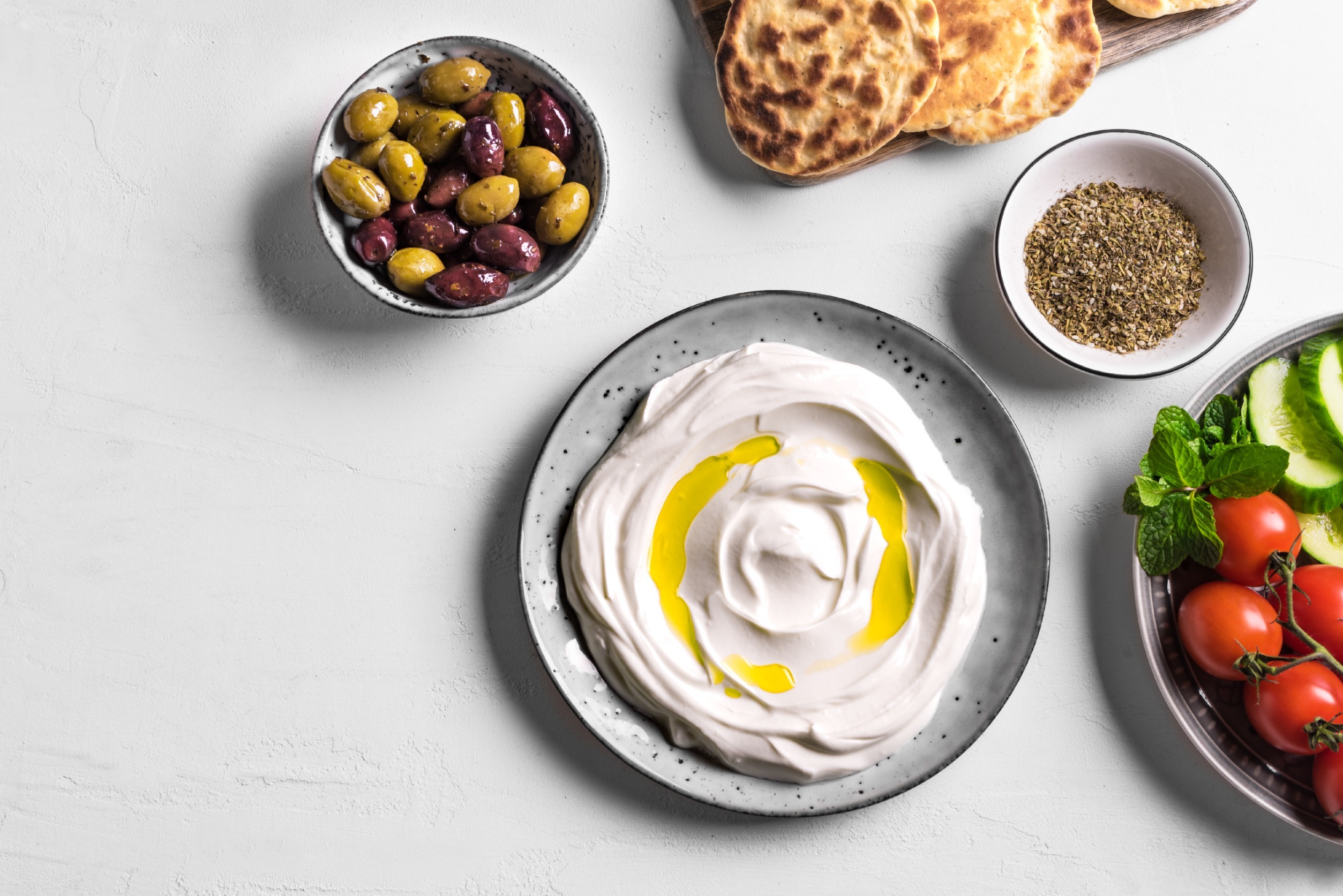
Labneh, a lusciously creamy and tangy dairy product, holds a special place in the culinary landscapes of Middle Eastern and Mediterranean cuisines. This strained yogurt, often compared to Greek yogurt, boasts a distinctive texture and flavor that elevate it to a versatile ingredient and a star in its own right. To understand labneh is to embark on a journey through its origins, preparation methods, cultural significance, and the myriad ways it graces tables around the world.
Origins and Preparation
Labneh traces its roots back to the Levant region, encompassing countries like Lebanon, Syria, Jordan, and Palestine. It has deep cultural ties and is woven into the fabric of daily life in these regions. The preparation of labneh is a simple yet time-honored process that requires patience and attention to detail.
The journey begins with high-quality yogurt, typically made from whole milk. The choice of yogurt is crucial, as it sets the foundation for the richness and flavor of the final product. The yogurt is usually mixed with a pinch of salt, adding a subtle savory note to the impending creaminess.
Once the yogurt is seasoned, the transformation into labneh commences. The traditional method involves suspending the yogurt in a muslin or cheesecloth bag, allowing it to strain. This process extracts the whey, leaving behind a dense, velvety yogurt with a consistency that falls between traditional yogurt and soft cheese. The duration of straining varies, with some opting for a few hours for a slightly thicker yogurt and others letting it luxuriate for a day or more for a more pronounced labneh experience.
Texture and Flavour
The magic of labneh lies in its texture — a harmonious balance between the creamy and the firm. The straining process imparts a thickness that is lusciously indulgent without being overly heavy. Labneh achieves a spreadable consistency that lends itself well to various culinary applications.
In terms of flavor, labneh embodies the distinct tanginess of yogurt but with an intensified richness. The salt, if added, enhances the savory undertones, making it a versatile canvas for both sweet and savory pairings. The creaminess and acidity of labneh make it an excellent counterpart to bold and robust flavors, creating a symphony on the palate.
Cultural Significance
Beyond its culinary prowess, labneh holds cultural significance deeply rooted in the Middle East. It is a staple on the breakfast table, often enjoyed with fresh bread, olive oil, and a sprinkling of herbs. Labneh also plays a role in celebratory feasts and gatherings, showcasing its versatility in both everyday and festive contexts.
In Middle Eastern households, making labneh can be a family affair, passed down through generations. The process itself becomes a shared experience, fostering a connection to heritage and traditions. Labneh is not merely a food item; it is a reflection of a cultural identity, a culinary tradition that bridges the past and the present.
Versatility in Culinary Applications
Labneh’s versatility extends far beyond the breakfast table. Its adaptability makes it a sought-after ingredient in various culinary creations.
Spreadable Delight
Labneh shines as a spread, perfect for slathering on warm pita bread or crusty artisanal loaves. The addition of olive oil, za’atar, or a sprinkle of sumac enhances its character, creating a delectable appetizer or snack.
Dip and Dunk
Labneh transforms into a delightful dip with the infusion of herbs, garlic, or spices. It becomes a perfect companion for fresh vegetables, pita chips, or even as a cooling side to balance the heat of spicy dishes.
Creamy Sauces and Dressings
Its creamy consistency makes labneh an ideal base for sauces and dressings. It can be thinned with a bit of water and seasoned to create a versatile dressing for salads or a cooling sauce for grilled meats.
Sweet Endings
Labneh’s adaptability extends to sweet applications as well. Mixed with honey, fruits, or a drizzle of chocolate, it becomes a dessert or a sweet breakfast option, marrying its tangy profile with the sweetness of various accompaniments.
Cheese Alternative
Labneh’s texture and flavor make it a compelling alternative to cream cheese or other soft cheeses. It can be used in both sweet and savory dishes, offering a distinctive twist to familiar recipes.
Health Considerations
In addition to its delightful taste and versatility, labneh also brings health benefits to the table. As a dairy product, it is a good source of calcium, essential for bone health. The probiotics present in yogurt, from which labneh is derived, contribute to gut health, supporting the balance of the microbiome. Additionally, the straining process reduces the lactose content, making it more digestible for individuals who may be lactose intolerant.
However, it’s essential to be mindful of portion sizes, particularly if watching caloric intake, as labneh is a dense and rich dairy product.
Labneh, with its rich history, artisanal preparation, and culinary versatility, emerges as a treasure in the world of dairy products. Its journey from strained yogurt to a velvety spread embodies cultural traditions, family connections, and a commitment to the art of slow food. Labneh invites individuals to savor not just its taste but the stories it carries — a true embodiment of the intersection between food and culture. As it continues to find its way onto tables around the globe, labneh transcends being a mere condiment; it becomes a testament to the enduring power of culinary heritage and the joy of shared meals.


Leave a Reply